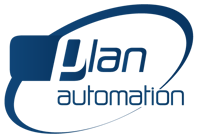With so much on the line when it comes to safety and quality, your inspection equipment has to run as optimally as possible. Ensuring peak performance and the best lifecycle of an inspection system includes choosing machines designed to last, ensuring the best environment to run the systems, training operators on proper procedures and taking proactive, preventive measures. Maximizing performance through care, training, and preventive, proactive measures also helps operators enhance their overall equipment effectiveness and lower their total cost of ownership over the life of the equipment.

Achieving peak performance, whether for a piece of equipment in a manufacturing facility, an electronic device or vehicle, isn’t a given, nor is it a one-time proposition. Even the highest caliber machines wear over time and require attention and care.
In my many visits over the years to manufacturing plants around the country and across several industries, I can attest to the fact that just as x-ray inspection systems keep a virtual eye on your products, keeping an eye on how the machinery is used is crucial to its ongoing success.
There are certain steps that can (and should) be taken to get the best lifecycle and performance out of equipment. For advanced inspection systems, including x-ray and fat analysis machines, those steps begin with the selection of a machine that is built to last and continues to operate at peak performance throughout its use in your facility.
Here are steps to consider in the quest to obtain the most reliable results from your inspection systems:
Step One: Take stock of your operating environment
After you invest in an advanced inspection system and put it at key control points on the line, make sure the setting is conducive for its effectiveness. For example, clean, stable power is instrumental in performance: fluctuations in power and/or electricity can impact imaging and analysis performed by an x-ray machine. In some cases, a dedicated power unit may be needed to deliver constant power. We recommend a maximum fluctuation range of +10 to -5 percent. Stability is also essential in the installation of an inspection system, which should be securely bolted into the floor to prevent vibrations that can impede the x-ray process. Another factor is product presentation: is product arriving from a transfer point to the x-ray beam machine in a consistent, tightly controlled manner? These are reminders that consistency is an x-ray machine’s best friend.
Step Two: Train for success
Following the proper set-up, teardown and cleaning procedures hinges on those who are doing those tasks, so training on all aspects of the x-ray machine use is crucial. Understand what the machine is telling you via the controls or software so you can make the needed adjustments quickly. Beyond the fundamental of operations, there should be a recognition of the layers of technology used in the system, and that there are limitations even with the most advanced technologies. Knowledge, diligence and technology go hand in hand.
Step Three: Be proactive
Preventive maintenance programs are essential, given the fact that these are machines that, while built to last, do experience wear after a certain number of years and uses. Talk to your equipment provider, including your x-ray supplier, and ask about maintenance plans that can ensure uptime.
Having preventive maintenance kits and extra parts is another way to optimize performance and extend the longevity of x-ray machines by limiting downtime. Identify critical parts necessary for plant operations and keep them on hand so you can react more quickly and increase uptime.
Finally, planning for the unplanned goes a long way in assuring performance when and if a piece of equipment goes down. Have a network support plan in place, including remote support, for faster response time.
By taking these steps, users can get the most of out their investment and optimize the Total Cost of Ownership, which encompass the initial cost of the system as well as the lifecycle cost of running the machine efficiently with the right maintenance, spare parts and user training.


